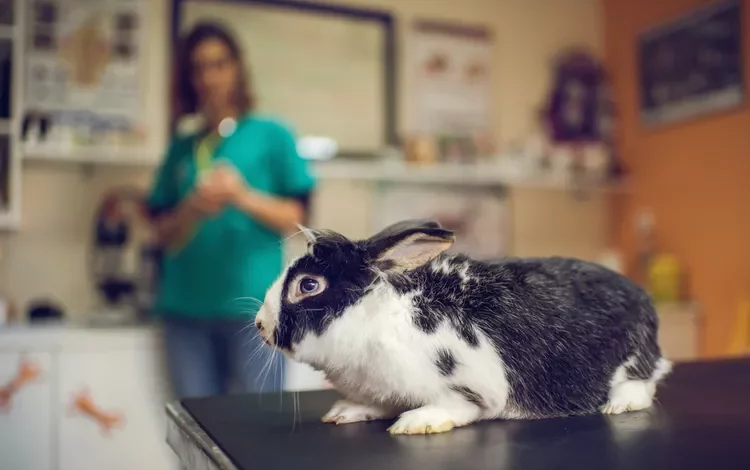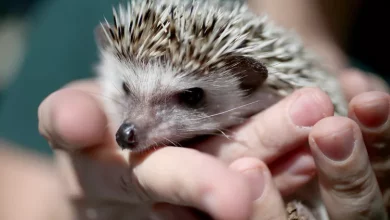The Most Common Rabbit Diseases

Overview of the Most Common Rabbit Diseases
Rabbits are popular pets and can make wonderful companions. However, they are also susceptible to a variety of diseases and conditions that can cause them discomfort and, in some cases, even death. It is important for rabbit owners to be aware of the most common rabbit diseases so they can take steps to prevent them and provide prompt treatment if necessary.
The most common rabbit diseases include pasteurellosis, coccidiosis, ear mites, snuffles, and enteritis. Pasteurellosis is caused by the bacteria Pasteurella multocida and is spread through contact with other rabbits or their droppings. Symptoms include sneezing, runny eyes and nose, and difficulty breathing. Treatment involves antibiotics, but prevention is key; rabbits should not come into contact with other rabbits or their droppings.
Coccidiosis is caused by a parasite that affects the digestive system. Symptoms include diarrhea, loss of appetite, and weight loss. Treatment requires antibiotics and supportive care. Prevention involves keeping the environment clean and free of parasites.
Ear mites are tiny parasites that live in the ears of rabbits and cause irritation and inflammation. Symptoms include head shaking, scratching at the ears, and discharge from the ears. Treatment involves cleaning the ears with an ear mite solution and applying an anti-parasite medication.
Snuffles is a respiratory infection caused by the bacteria Pasteurella multocida. Symptoms include sne
Diagnosing and Treating Rabbit Ear Infections
Rabbit ear infections are a common problem that can cause discomfort and distress for the animal. Diagnosing and treating rabbit ear infections is important for the health and wellbeing of the animal.
The most common symptom of a rabbit ear infection is a discharge from the ear. This discharge may be yellow, brown, or black and may have an unpleasant odor. Other signs of an ear infection in rabbits may include head shaking, scratching at the ears, and tilting the head to one side. In severe cases, the rabbit may also experience loss of balance or hearing loss.
If you suspect your rabbit has an ear infection, it is important to take it to the vet for a diagnosis. The vet will likely perform an examination of the ears and may take a sample of the discharge to test for bacteria or fungi. In some cases, an X-ray may also taken to determine if there any damage to the inner.
Once the cause the infection has been identified, the vet will be able to recommend a course of treatment. Treatment involves antibiotics or antifungal medications to help clear up the infection. In some cases, surgery may be necessary to remove any debris or foreign objects from the ear canal.
In addition to medications, it is important to keep your rabbit’s ears clean and dry. This can be done by using a cotton swab dipped in warm water and gently cleaning the inside of the ears. If your rabbit has
Prevention and Management of Rabbit Gastrointestinal Disease
Rabbit Gastrointestinal Disease (RGD) is a common and potentially life-threatening condition in pet rabbits. It is caused by a combination of factors, including diet, stress, and environmental factors. Proper prevention and management of RGD is essential for the health and well-being of pet rabbits.
Prevention of RGD begins with proper diet. A balanced diet that is high in fiber and low in sugar is essential for healthy digestion. A diet that consists of hay, fresh vegetables, and a small amount of pellets is ideal. In addition, fresh water should be available at all times. It is also important to provide a stress-free environment for rabbits, as stress can lead to digestive problems.
If RGD is suspected, it is important to seek veterinary care immediately. Diagnosis of RGD may include physical examination, blood tests, x-rays, and endoscopy. Treatment may include antibiotics, anti-inflammatory medications, fluid therapy, and dietary changes. In some cases, surgery may be necessary to remove blockages or tumors.
In addition to medical treatment, there are several management strategies that can help prevent or reduce the severity of RGD. These include providing a clean living environment, avoiding overfeeding, and providing plenty of exercise. It is also important to monitor the rabbit’s diet and make sure it is meeting its nutritional needs.
RGD can be a serious condition in pet rabbits, but with proper prevention and
Recognizing the Signs of Rabbit Viral Haemorrhagic Disease
Rabbit Viral Haemorrhagic Disease (RVHD) is a highly contagious and often fatal virus that affects both domestic and wild rabbits. It is caused by a calicivirus, which is an RNA virus that belongs to the family Caliciviridae. The virus is highly contagious and can be spread through direct contact with infected rabbits, contact with contaminated objects, or through the air.
The most common signs of RVHD include fever, lethargy, loss of appetite, difficulty breathing, and sudden death. Other signs may include nasal and eye discharge, bleeding from the nose and mouth, and swelling of the head and neck. In some cases, the virus may cause neurological symptoms such as seizures and paralysis.
It is important to recognize the signs of RVHD in order to prevent its spread and protect the health of your rabbit. If you suspect your rabbit may have RVHD, it is important to contact your veterinarian immediately. Your veterinarian will be able to diagnose RVHD using a combination of physical examination, laboratory testing, and imaging techniques. Treatment options for RVHD may include antibiotics, antiviral drugs, and supportive care.
RVHD can be prevented by vaccinating your rabbit against the virus. Vaccination is recommended for all rabbits, especially those that are housed in groups or kept outdoors. It is also important to practice good hygiene when handling your rabbit, as the virus can be spread through contact with contaminated objects. Additionally,
Understanding the Risk Factors for Rabbit Myxomatosis
Rabbit Myxomatosis is a highly contagious and potentially fatal viral disease that affects wild and domestic rabbits. It is caused by the Myxoma virus, which is spread by direct contact between rabbits or by blood-feeding insects such as fleas, mosquitoes, and ticks. The virus was introduced to Australia in 1950 in an effort to control the wild rabbit population, and it has since spread to other parts of the world.
Understanding the risk factors for Rabbit Myxomatosis is important in order to effectively prevent and manage the disease. The most significant risk factor is contact with infected rabbits or their secretions, such as urine and feces. This can occur through direct contact with an infected rabbit or indirectly through contact with contaminated objects, such as bedding or food dishes. Insects can also transmit the virus from one rabbit to another if they feed on an infected rabbit and then feed on a healthy one.
Other risk factors include overcrowding, poor nutrition, and stress. Overcrowded conditions can increase the chances of direct contact between rabbits, while poor nutrition can weaken a rabbit’s immune system and make it more susceptible to infection. Stress can also increase the likelihood of infection, as rabbits that are stressed are more likely to groom themselves excessively, which can spread the virus from one rabbit to another.
Finally, there is also evidence that certain breeds of rabbits may be more susceptible to Rabbit Myxomatosis than others. These breeds
Excerpt
Rabbits are susceptible to a variety of diseases, including bacterial, viral, fungal, and parasitic infections. Common rabbit diseases include myxomatosis, coccidiosis, pasteurellosis, and VHD. All of these diseases can be prevented with proper husbandry and veterinary care. Vaccinations are available for some of these diseases.




